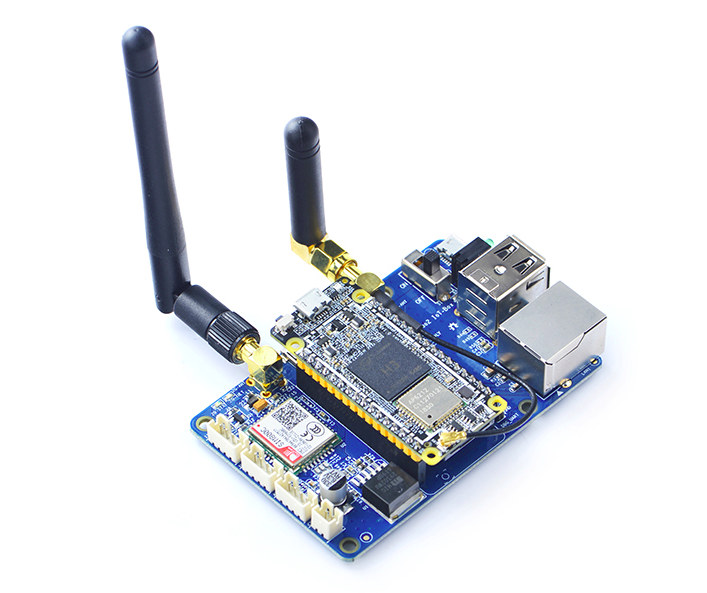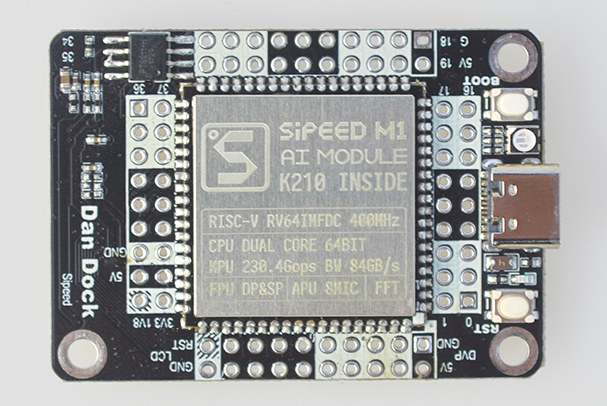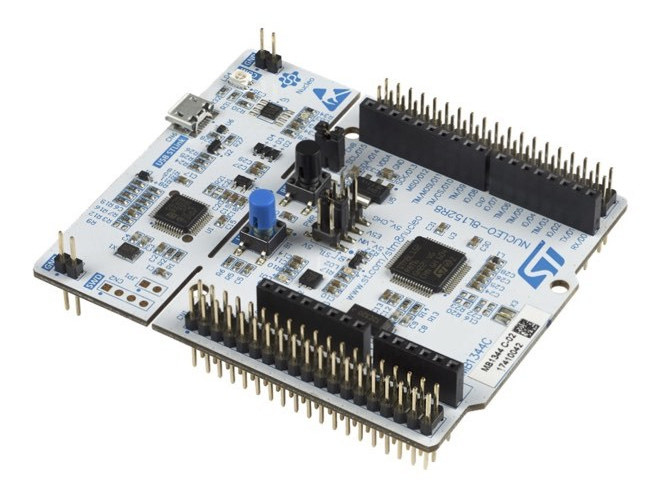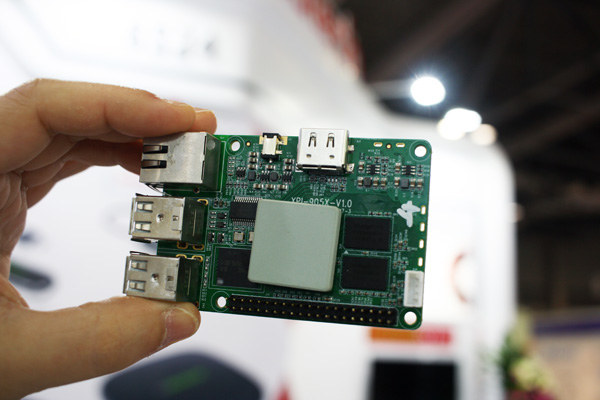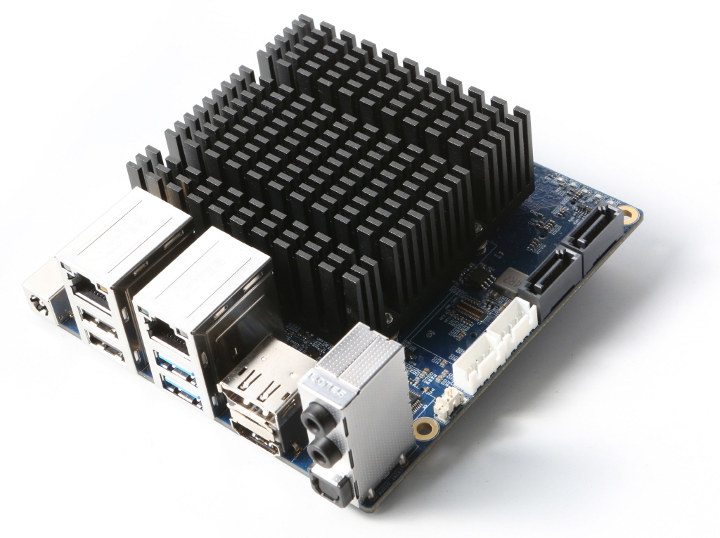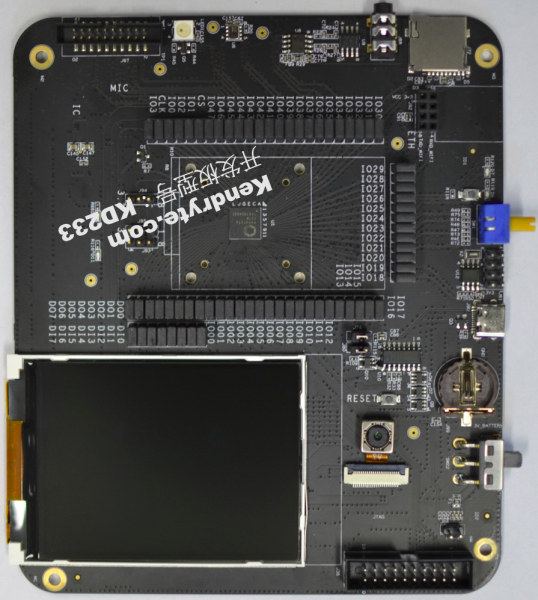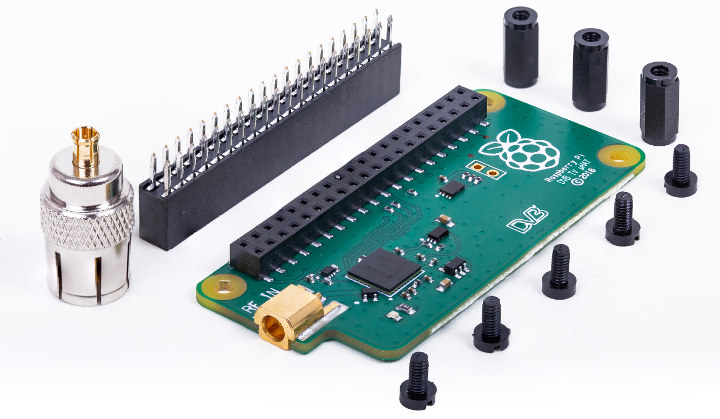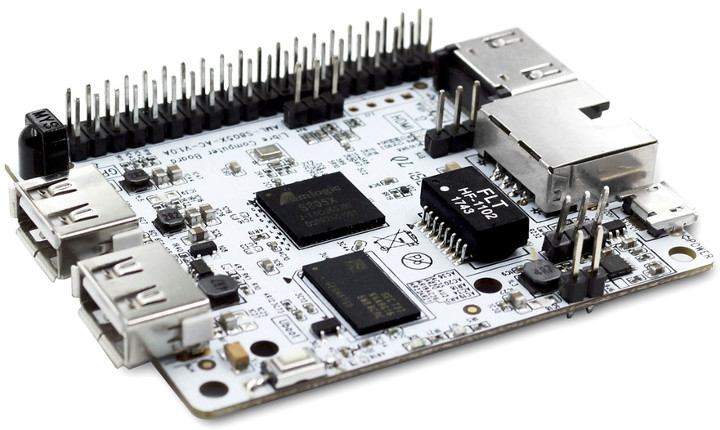NanoPi Duo was launched last year as an ultra-cheap ($8+) Arm Linux board that fits into a breadboard. The board was powered by Allwinner H2+ processor coupled with 256 or 512MB RAM, and the infamous XR819 802.11b/g/n WiFi chip. FriendlyElec has now launched NanoPi Duo2, that’s still breadboard compatible, but with a slightly longer form factor, Allwinner H3 processor, 512 MB RAM, better WiFi thanks to an AP6212 module, and an extra camera interface. As we’ll see further below the company also developed a carrier board for 2G cellular IoT applications. NanoPi Duo2 specifications with highlights in bold showing differences again NanoPi Duo: SoC – Allwinner H3 quad core Cortex A7 processor @ 1.2 GHz with Mali-400MP2 GPU System Memory – 512 MB DDR3 SDRAM Storage – micro SD card slot, footprint for SPI flash Connectivity – 802.11 b/g/n WiFi + Bluetooth 4.0 LE (Ampak AP6212 module) with chip antenna, […]
Sipeed M1 RISC-V Computer Vision Module Features Kendryte K210 Processor
Just a few days ago, I wrote about Kendryte KD233 board featuring Kendryte K210 dual core RISC-V processor, with some fairly detailed documentation, public links to toolchains and other tools. and going for $50. But the team behind LicheePi boards informed me that they also made their own K210 module called Sipeed M1 and selling on Taobao for the Chinese market, as well as on Yoycart for $10.89 plus shipping for the oversea market, and you’ll find a devkit with a dock board for about $24 and up depending on options. Sipeed M1 module specifications: SoC – Kendryte K210 dual core 64-bit RISC-V processor @ 400 MHz with KPU CNN hardware accelerator, APU audio hardware accelerator, 6 MB general purpose SRAM, 2MB AI SRAM memory, and AXI ROM to load user program from SPI flash Package – 72-pin (25.4 x 25.4mm) But you’ll probably want to get start with M1 […]
STMicro Introduces the First STM8 Nucleo Boards, STM8 Arduino IDE Support
While development boards based on STMicro STM8 8-bit MCU such as the “one dollar board” or the official STM8 Discovery boards have been around for several years, STMicro had yet to release a Nucleo board based on the microcontroller. The company has now unveiled not one, but two such boards with NUCLEO-8L152R8 and NUCLEO-8S208RB. Both boards will look similar as only the MCU differs. The former features a 16 MHZ MCU with 64 kB flash and 4KB SRAM, while the latter comes with a 24 MHz MCU with 128 kB flash, and 6KB SRAM.STM8 Nucleo board specifications: MCU (One of the other) NUCLEO-8L152R8 – STMicro STM8L152R8T6 8-bit MCU @ 16 MHz with 64 kB flash, 2KB EEPROM, 4KB SRAM NUCLEO-8S208RB – STMicro STM8S208RBT6 8-bit MCU @ 24 MHz with 128 kB flash, 2KB EEPROM, 6KB SRAM 4x LEDs – USB communication (LD4), 5V STLINK (LD3), User (LD2), Power (LD1) 2 […]
Geniatech XPI-S905X Board Leverages Raspberry Pi 3 Form Factor
Geniatech is well known in the media player industry for their Amlogic based TV boxes, but in recent years, they’ve also launched some development board from other silicon vendors such as Qualcomm with Developer Board IV and Developer Board 8 powered by respectively Snapdragon 410E and 820E. The company has now launched the XPI family of single board computers that will allow closely follow Raspberry Pi 3 form factor while offering better performance and features. Geniatech will start with XPI-S905X board powered by an Amlogic S905X quad core Cortex A53 processor @ 1.5 GHz with 4K HDR video playback and output capability. Geniatech XPI-S905X board preliminary specifications: SoC – Amlogic S905X quad core ARM Cortex-A53 processor @ up to 1.5 GHz (but they claim 1.6 to 2.0 GHz max…) with penta core ARM Mali-450MP GPU, and Amlogic Video Engine 10 System Memory – 1GB or 2GB (default) DDR3 RAM Storage […]
ODROID-H2 Intel Celeron J4105 Single Board Computer to Launch in November
There were talks about Hardkernel working on an ODROID x86 board since last year, as the CEO expected to launch such board later in 2017 in an interview published in ODROID magazine. Finally, it took them several iterations and processors considerations before being ready for launch, and ODROID-H2 should become available next month as the first ODROID x86 board. ODROID-H2 will feature an Intel Celeron J4105 Gemini Lake processor, two SO-DIMM slots for memory, two SATA ports and M.2 NVMe slot for storage, two Gigabit Ethernet ports, a mix of USB 3.0 and 2.0 ports, and more. ODROID-H2 board specifications: SoC – Intel Celeron J4105 quad core processor @ up to 2.3 GHz (real frequency) with 12EU Intel UHD Graphics 600 System Memory – Dual-channel Memory DDR4-PC19200 (2400MT/s) supporting up to 32GiB RAM in total Storage – M.2 PCIe 2.0 x4 slot for one NVMe storage, 2x SATA 3.0 ports, […]
$50 Kendryte KD233 Board Features K210 Dual Core RISC-V SoC
RISC-V is talked about a lot, and we’re started to see a few development boards coming to market, or at least being announced with some based on SiFive processors such as HiFive Unleashed or Arduino Cinque, as well as other like GAPUINO GAP8 for low power A.I. applications. The Arduino board is not for sale yet, and HiFive Unleashed and GAPUINO GAP8 are fairly expensive at $999 and $229. Kendryte KD233 board is another RISC-V development board, based on Kendryte K210 dual core 64-bit RISC-V processor designed for machine vision and “machine hearing”. The board goes for $49.99 on AnalogLamb. Kendryte KD233 board specifications: SoC – Kendryte K210 dual core 64-bit RISC-V processor, KPU Convolutional Neural Network (CNN) hardware accelerator, APU audio hardware accelerator, 6MiB of on-chip general-purpose SRAM memory and 2MiB of on-chip AI SRAM memory, AXI ROM to load user program from SPI flash Storage – 128 Mbit […]
Raspberry Pi TV HAT Adds a DVB-T2 Tuner to Raspberry Pi Boards
The Raspberry Pi foundation has just launched another official HAT for their maker boards with the Raspberry Pi TV HAT based on Raspberry Pi Zero form factor, and is equipped a DVB-T2/T tuner in order to convert your board into a Linux based digital TV receiver and recorder. Raspberry Pi TV HAT specifications: Sony CXD2880 TV tuner Supported TV standards DVB-T2 (1.7MHz, 5MHz, 6MHz, 7MHz, 8MHz channel bandwidth DVB-T (5MHz, 6MHz, 7MHz, 8MHz channel bandwidth) Reception frequency: VHF III, UHF IV, UHF V RF coaxial input for antenna connection RPi Interface – 40-pin RPi header Dimensions – 65 x 30 mm (half-size HAT) Operating temperature – 0–50°C The Raspberry Pi TV HAT is also known as the Raspberry Pi DVB TV μHAT based on the markings on the board’s silkscreen. The add-on boards follows a new HAT specification called the “half-size HAT” matching Raspberry Pi Zero board’s dimensions. Instructions to use […]
La Frite Amlogic S805X Board Runs Mainline Linux, Goes for $5 and Up (Crowdfunding)
Libre Computer first started with their AML-S905X-CC (aka Le Potato) board powered by Amlogic S905X processor last year, and they’ve since then launched several other boards based on Allwinner or Rockchip processor. But their latest “La Frite” board – also known as AML-S805X-AC – is an even lower cost version of the “Le Potato” board, with an Amlogic S805X processor limited to 1080p60 output and video decoding, a smaller footprint based on the one for Raspberry Pi Model A+, and price starting at just $5 on Kickstarter. AML-S805X-AC “La Frite” board specifications: SoC – Amlogic S805X quad core ARM Cortex-A53 processor @ 1.2 GHz with penta core ARM Mali-450MP GPU @ 650 MHz, and Amlogic Video Engine 10 System Memory – 512 MB or 1GB DDR4 @ 2400 MHz Storage – eMMC module connector, 128 Mb SPI NOR flash Video & Audio Output – HDMI 2.0 port Video Codecs Decoding […]


